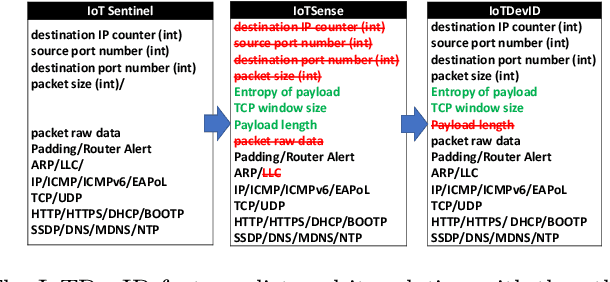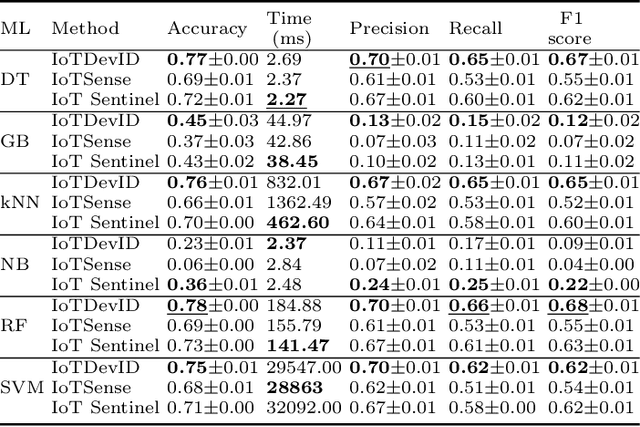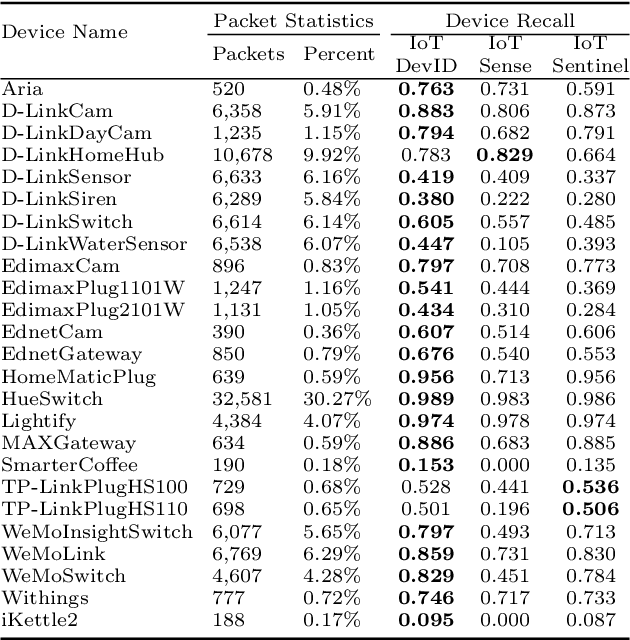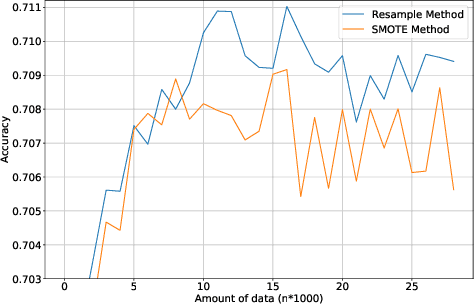Kahraman Kostas
Individual Packet Features are a Risk to Model Generalisation in ML-Based Intrusion Detection
Jun 07, 2024Abstract:Machine learning is increasingly used for intrusion detection in IoT networks. This paper explores the effectiveness of using individual packet features (IPF), which are attributes extracted from a single network packet, such as timing, size, and source-destination information. Through literature review and experiments, we identify the limitations of IPF, showing they can produce misleadingly high detection rates. Our findings emphasize the need for approaches that consider packet interactions for robust intrusion detection. Additionally, we demonstrate that models based on IPF often fail to generalize across datasets, compromising their reliability in diverse IoT environments.
LSTM based IoT Device Identification
Apr 27, 2023Abstract:While the use of the Internet of Things is becoming more and more popular, many security vulnerabilities are emerging with the large number of devices being introduced to the market. In this environment, IoT device identification methods provide a preventive security measure as an important factor in identifying these devices and detecting the vulnerabilities they suffer from. In this study, we present a method that identifies devices in the Aalto dataset using Long short-term memory (LSTM)
CNN based IoT Device Identification
Apr 27, 2023Abstract:While the use of the Internet of Things is becoming more and more popular, many security vulnerabilities are emerging with the large number of devices being introduced to the market. In this environment, IoT device identification methods provide a preventive security measure as an important factor in identifying these devices and detecting the vulnerabilities they suffer from. In this study, we present a method that identifies devices in the Aalto dataset using the convolutional neural network (CNN).
WiFi Based Distance Estimation Using Supervised Machine Learning
Aug 15, 2022



Abstract:In recent years WiFi became the primary source of information to locate a person or device indoor. Collecting RSSI values as reference measurements with known positions, known as WiFi fingerprinting, is commonly used in various positioning methods and algorithms that appear in literature. However, measuring the spatial distance between given set of WiFi fingerprints is heavily affected by the selection of the signal distance function used to model signal space as geospatial distance. In this study, the authors proposed utilization of machine learning to improve the estimation of geospatial distance between fingerprints. This research examined data collected from 13 different open datasets to provide a broad representation aiming for general model that can be used in any indoor environment. The proposed novel approach extracted data features by examining a set of commonly used signal distance metrics via feature selection process that includes feature analysis and genetic algorithm. To demonstrate that the output of this research is venue independent, all models were tested on datasets previously excluded during the training and validation phase. Finally, various machine learning algorithms were compared using wide variety of evaluation metrics including ability to scale out the test bed to real world unsolicited datasets.
IoTDevID: A Behaviour-Based Fingerprinting Method for Device Identification in the IoT
Feb 17, 2021



Abstract:Device identification is one way to secure a network of IoT devices, whereby devices identified as suspicious can subsequently be isolated from a network. We introduce a novel fingerprinting method, IoTDevID, for device identification that uses machine learning to model the behaviour of IoT devices based on network packets. Our method uses an enhanced combination of features from previous work and includes an approach for dealing with unbalanced device data via data augmentation. We further demonstrate how to enhance device identification via a group-wise data aggregation. We provide a comparative evaluation of our method against two recent identification methods using three public IoT datasets which together contain data from over 100 devices. Through our evaluation we demonstrate improved performance over previous results with F1-scores above 99%, with considerable improvement gained from data aggregation.
 Add to Chrome
Add to Chrome Add to Firefox
Add to Firefox Add to Edge
Add to Edge